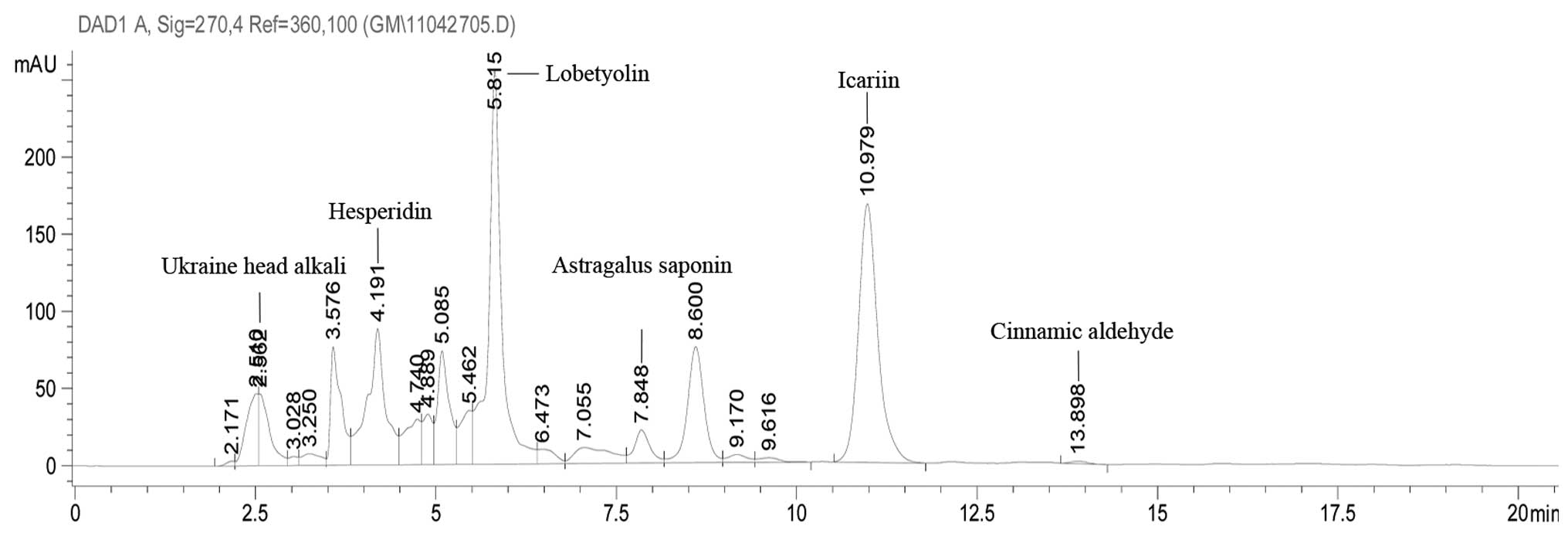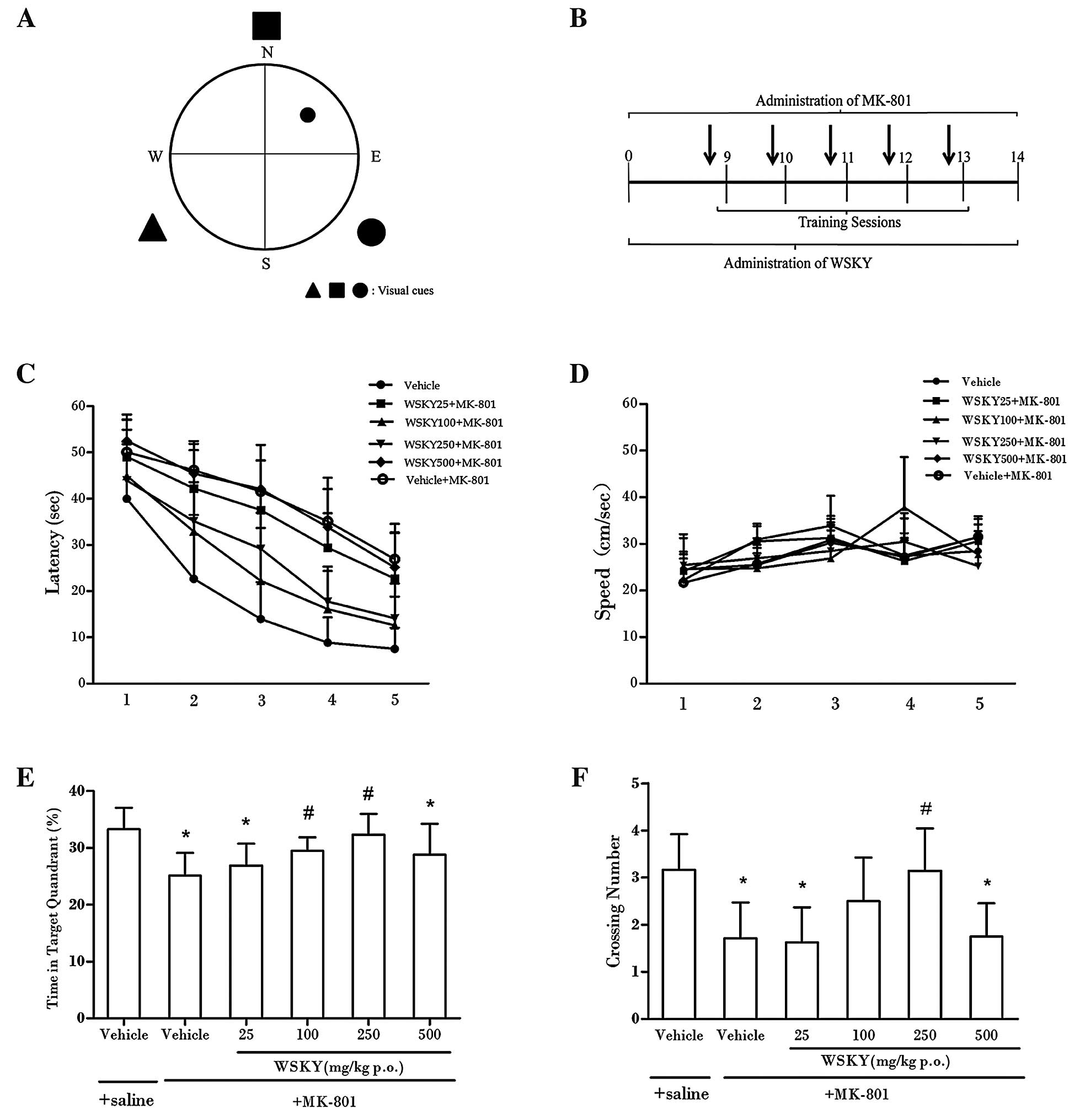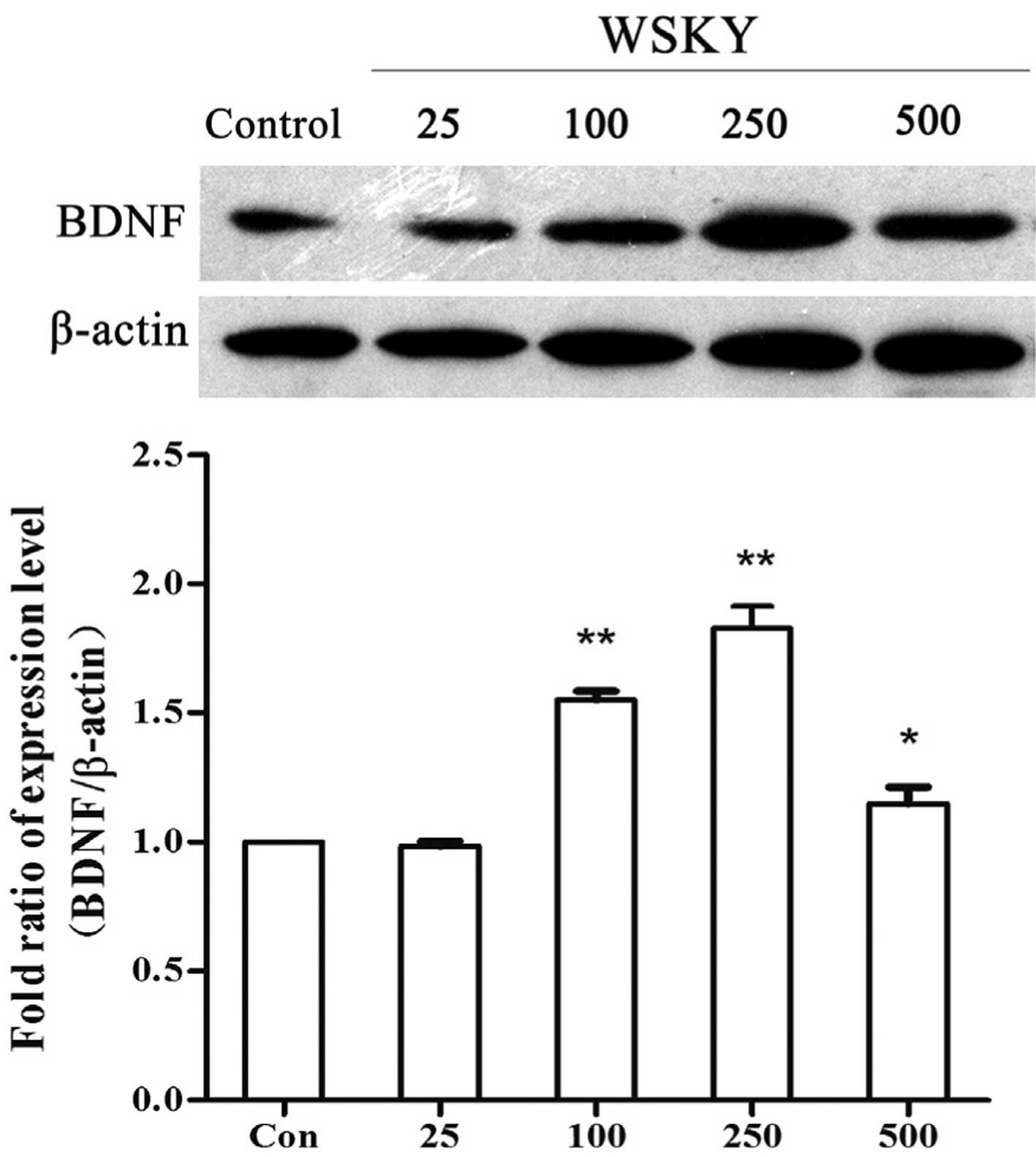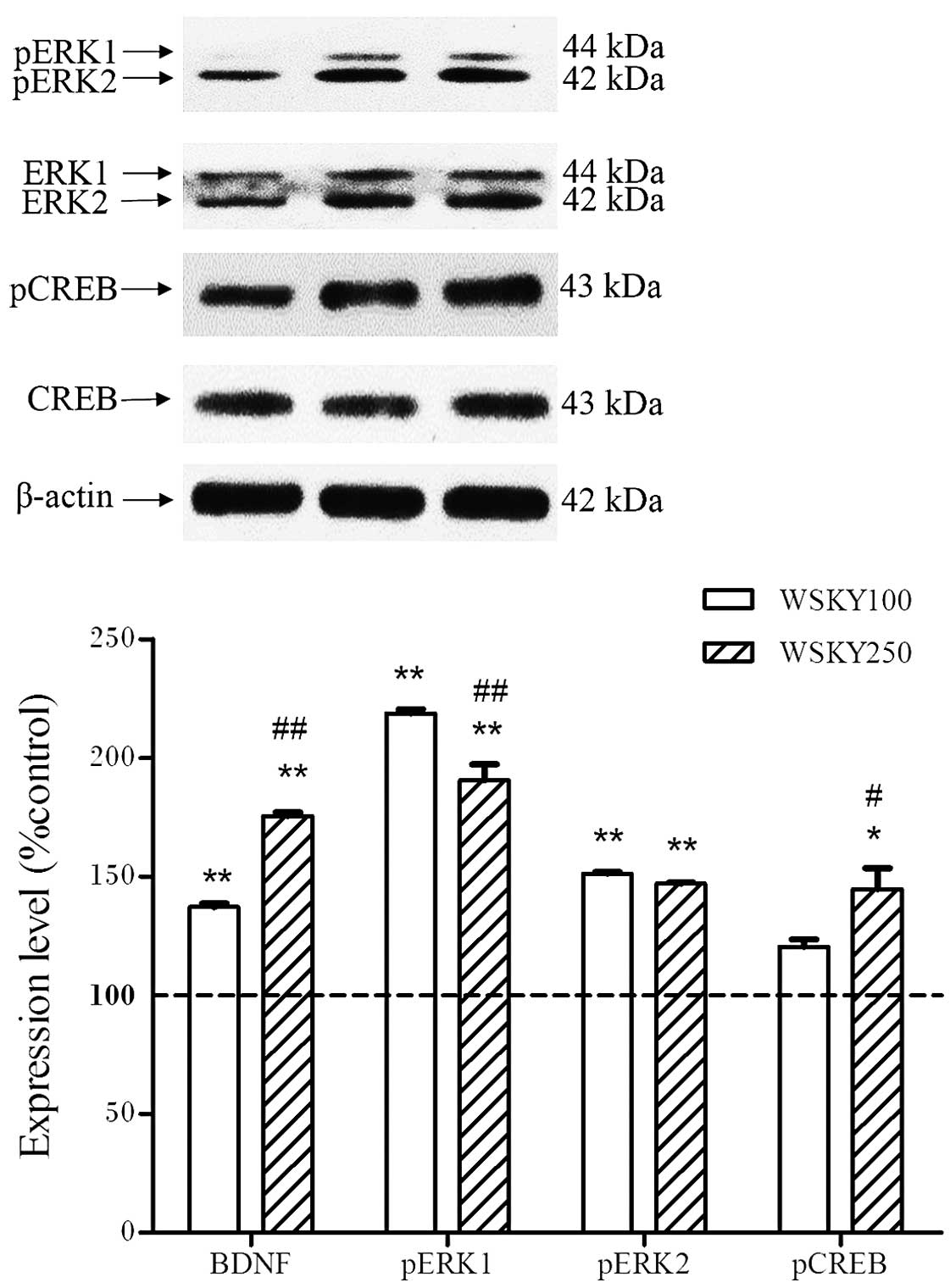|
1
|
Taylor MA and Abrams R: Cognitive
impairment in schizophrenia. Am J Psychiatry. 141:196–201. 1984.
View Article : Google Scholar : PubMed/NCBI
|
|
2
|
Reichenberg A, Weiser M, Caspi A, et al:
Premorbid intellectual functioning and risk of schizophrenia and
spectrum disorders. J Clin Exp Neuropsychol. 28:193–207. 2006.
View Article : Google Scholar : PubMed/NCBI
|
|
3
|
Kurtz MM, Moberg PJ, Gur RC and Gur RE:
Approaches to cognitive remediation of neuropsychological deficits
in schizophrenia: a review and meta-analysis. Neuropsychol Rev.
11:197–210. 2001. View Article : Google Scholar
|
|
4
|
Lieberman JA, Stroup TS, McEvoy JP, et al:
Effectiveness of antipsychotic drugs in patients with chronic
schizophrenia. N Engl J Med. 353:1209–1223. 2005. View Article : Google Scholar : PubMed/NCBI
|
|
5
|
Marder SR and Fenton W: Measurement and
Treatment Research to Improve Cognition in Schizophrenia: NIMH
MATRICS initiative to support the development of agents for
improving cognition in schizophrenia. Schizophr Res. 72:5–9. 2004.
View Article : Google Scholar : PubMed/NCBI
|
|
6
|
Chen ZH, Wang GH, Wang XP, et al: Effects
of warm-supplementing kidney yang (WSKY) capsule added on
risperidone on cognition in chronic schizophrenic patients: a
randomized, double-blind, placebo-controlled, multi-center clinical
trial. Hum Psychopharmacol. 23:465–470. 2008. View Article : Google Scholar : PubMed/NCBI
|
|
7
|
Chen ZH, Wang GH, Wang XP, et al: Effect
of Warm-Supplementing Kidney Yang (WSKY) added to risperidone on
quality of life in patients with schizophrenia: a randomized
controlled trial. Clin Rehabil. 23:963–972. 2009. View Article : Google Scholar : PubMed/NCBI
|
|
8
|
Lee YS and Silva AJ: The molecular and
cellular biology of enhanced cognition. Nat Rev Neurosci.
10:126–140. 2009. View
Article : Google Scholar : PubMed/NCBI
|
|
9
|
Lipsky RH and Marini AM: Brain-derived
neurotrophic factor in neuronal survival and behavior-related
plasticity. Ann NY Acad Sci. 1122:130–143. 2007. View Article : Google Scholar : PubMed/NCBI
|
|
10
|
Buckley PF, Pillai A and Howell KR:
Brain-derived neurotrophic factor: findings in schizophrenia. Curr
Opin Psychiatry. 24:122–127. 2011. View Article : Google Scholar : PubMed/NCBI
|
|
11
|
Favalli G, Li J, Belmonte-de-Abreu P, Wong
AH and Daskalakis ZJ: The role of BDNF in the pathophysiology and
treatment of schizophrenia. J Psychiatr Res. 46:1–11. 2012.
View Article : Google Scholar
|
|
12
|
Ahlander M, Misane I, Schött PA and Ogren
SO: A behavioral analysis of the spatial learning deficit induced
by the NMDA receptor antagonist MK-801 (dizocilpine) in the rat.
Neuropsychopharmacology. 21:414–426. 1999. View Article : Google Scholar : PubMed/NCBI
|
|
13
|
Reagan-Shaw S, Nihal M and Ahmad N: Dose
translation from animal to human studies revisited. FASEB J.
22:659–661. 2008. View Article : Google Scholar
|
|
14
|
Morris R: Developments of a water-maze
procedure for studying spatial learning in the rat. J Neurosci
Methods. 11:47–60. 1984. View Article : Google Scholar : PubMed/NCBI
|
|
15
|
Niitsu T, Shirayama Y, Matsuzawa D, et al:
Associations of serum brain-derived neurotrophic factor with
cognitive impairments and negative symptoms in schizophrenia. Prog
Neuropsychopharmacol Biol Psychiatry. 35:1836–1840. 2011.
View Article : Google Scholar : PubMed/NCBI
|
|
16
|
Asevedo E, Gadelha A, Noto C, et al:
Impact of peripheral levels of chemokines, BDNF and oxidative
markers on cognition in individuals with schizophrenia. J Psychiatr
Res. 47:1376–1382. 2013. View Article : Google Scholar : PubMed/NCBI
|
|
17
|
Martinotti G, Di Iorio G, Marini S, et al:
Nerve growth factor and brain-derived neurotrophic factor
concentrations in schizophrenia: a review. J Biol Regul Homeost
Agents. 26:347–356. 2012.PubMed/NCBI
|
|
18
|
Gilmour G, Dix S, Fellini L, et al: NMDA
receptors, cognition and schizophrenia - testing the validity of
the NMDA receptor hypofunction hypothesis. Neuropharmacology.
62:1401–1412. 2012. View Article : Google Scholar
|
|
19
|
Mandillo S, Rinaldi A, Oliverio A and Mele
A: Repeated administration of phencyclidine, amphetamine and MK-801
selectively impairs spatial learning in mice: a possible model of
psychotomimetic drug-induced cognitive deficits. Behav Pharmacol.
14:533–544. 2003. View Article : Google Scholar : PubMed/NCBI
|
|
20
|
Li JT, Su YA, Guo CM, et al: Persisting
cognitive deficits induced by low-dose, subchronic treatment with
MK-801 in adolescent rats. Eur J Pharmacol. 652:65–72. 2011.
View Article : Google Scholar
|
|
21
|
Mouri A, Nagai T, Ibi D and Yamada K:
Animal models of schizophrenia for molecular and pharmacological
intervention and potential candidate molecules. Neurobiol Dis.
53:61–74. 2013. View Article : Google Scholar
|
|
22
|
Castren E, da Penha Berzaghi M, Lindholm D
and Thoenen H: Differential effects of MK-801 on brain-derived
neurotrophic factor mRNA levels in different regions of the rat
brain. Exp Neurol. 122:244–252. 1993. View Article : Google Scholar : PubMed/NCBI
|
|
23
|
Adachi N, Numakawa T, Kumamaru E, et al:
Phencyclidine-induced decrease of synaptic connectivity via
inhibition of BDNF secretion in cultured cortical neurons. Cereb
Cortex. 23:847–858. 2013. View Article : Google Scholar
|
|
24
|
Bekinschtein P, Cammarota M, Igaz LM, et
al: Persistence of long-term memory storage requires a late protein
synthesis-and BDNF- dependent phase in the hippocampus. Neuron.
53:261–277. 2007. View Article : Google Scholar : PubMed/NCBI
|
|
25
|
Callaghan CK and Kelly ÁM: Differential
BDNF signaling in dentate gyrus and perirhinal cortex during
consolidation of recognition memory in the rat. Hippocampus.
22:2127–2135. 2012. View Article : Google Scholar : PubMed/NCBI
|
|
26
|
Ying SW, Futter M, Rosenblum K, et al:
Brain-derived neurotrophic factor induces long-term potentiation in
intact adult hippocampus: requirement for ERK activation coupled to
CREB and upregulation of Arc synthesis. J Neurosci. 22:1532–1540.
2002.PubMed/NCBI
|
|
27
|
Mazzucchelli C and Brambilla R:
Ras-related and MAPK signalling in neuronal plasticity and memory
formation. Cell Mol Life Sci. 57:604–611. 2000. View Article : Google Scholar : PubMed/NCBI
|
|
28
|
Pláteník JJ, Kuramoto N and Yoneda Y:
Molecular mechanisms associated with long-term consolidation of the
NMDA signals. Life Sci. 67:335–364. 2000. View Article : Google Scholar : PubMed/NCBI
|
|
29
|
Ameri A, Gleitz J and Peters T: Inhibition
of neuronal activity in rat hippocampal slices by Aconitum
alkaloids. Brain Res. 738:154–157. 1996. View Article : Google Scholar : PubMed/NCBI
|
|
30
|
Ameri A, Gleitz J and Peters T: Aconitine
inhibits epileptiform activity in rat hippocampal slices. Naunyn
Schmiedebergs Arch Pharmacol. 354:80–85. 1996. View Article : Google Scholar : PubMed/NCBI
|
|
31
|
Neill JC, Barnes S, Cook S, et al: Animal
models of cognitive dysfunction and negative symptoms of
schizophrenia: focus on NMDA receptor antagonism. Pharmacol Ther.
128:419–432. 2010. View Article : Google Scholar : PubMed/NCBI
|
|
32
|
Rapoport JL, Addington AM, Frangou S and
Psych MR: The neurodevelopmental model of schizophrenia: update
2005. Mol Psychiatry. 10:434–449. 2005. View Article : Google Scholar : PubMed/NCBI
|


















